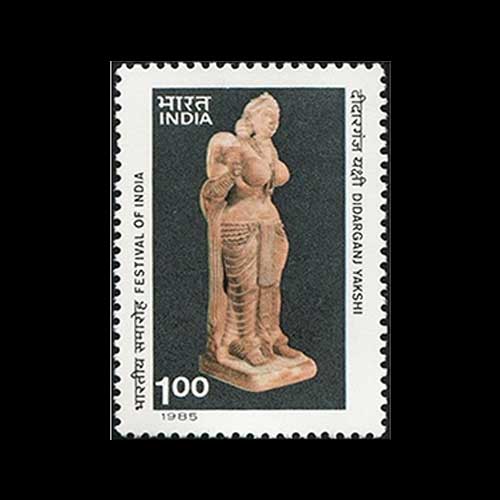Fascinating Archaeological Facts on Postage Stamps - 40
2025-05-30 Fri
The History of sculptural art in India traces its roots back to the Harappan Civilization, which produced intricate terracotta and Bronze figurines. Over time, distinct schools of art and sculpture emerged, notably in Gandhara, Mathura, and amaravati.One of the most exemplary pieces from early Indian #stone sculpture is the Didarganj Yakshi, also referred to as the Didarganj Chauri Bearer. This life-size sculpture, crafted from Chunar stone and measuring 5 feet 2 inches in height, was discovered in 1917, following erosion caused by the Ganga River at Didarganj Kadam Basul near Patna, Bihar. The sculpture exhibits a meticulous polishing technique that imparts a lustrous effect to its surface.
The age of the Didarganj Yakshi has been a subject of scholarly debate. Earlier assessments placed its origin in the 3rd century BCE, while more contemporary research suggests a timeframe in the 1st century CE. Based on its artistic technique, polish, and surface ornamentation, it is generally associated with the Mauryan period. However, some historians propose that its attractive form and prominent anklets may connect it to the Kushana period, making precise dating challenging due to the lack of associated artifacts from the same site.
Additionally, there has been ongoing discourse regarding the identity of the sculpture. Throughout the 20th century, it has been identified alternately as a goddess, a yakshi (a female nature deity), or a ganika (a female royal attendant). This ambiguity arises, in part, from its depiction with a chowrie (fly-whisk), a common attribute shared by both yakshis and ganikas.
On June 13, 1985, India Post commemorated the Didarganj Yakshi by issuing a stamp valued at Re 1, aligned with the theme of the 'Festival of India.' In 1986, the statue garnered public attention when its nose was inadvertently damaged during its transportation to the Smithsonian Institution and the National Gallery of Art in #Washington, D.C., #USA. Currently, the sculpture is housed at the Bihar Museum.
Latest News
-
Ghiyath Shah as Heir Apparent
2025-09-25 ThuGhiyath Shah was the ruler of the Malwa Sultanate, reigning from 1456 to 1500. From 1456 to 1469, he...
-
Malwa Sultan Mahmud Shah Silver Coins
2025-09-11 ThuMalwa Sultan Mahmud Shah minted silver coins in round and square flans. <br><br> For round coins,...
-
Malwa Sultan Mahmud Shah Billon coin
2025-08-26 TueMalwa Sultan Mahmud Shah's billon coins followed three weight standards: 100 rati, 96 rati, and 80 r...
-
Fascinating Archaeological Facts on Postage Stamps - 91
2025-08-23 SatRhinoceros is one of the oldest land mammal species existing in India. There are five species of rhi...
-
Fascinating Archaeological Facts on Postage Stamps - 90
2025-08-23 SatUthiramerur, a Village in Kanchipuram, Tamil Nadu, is notable for its Temple inscriptions that descr...

